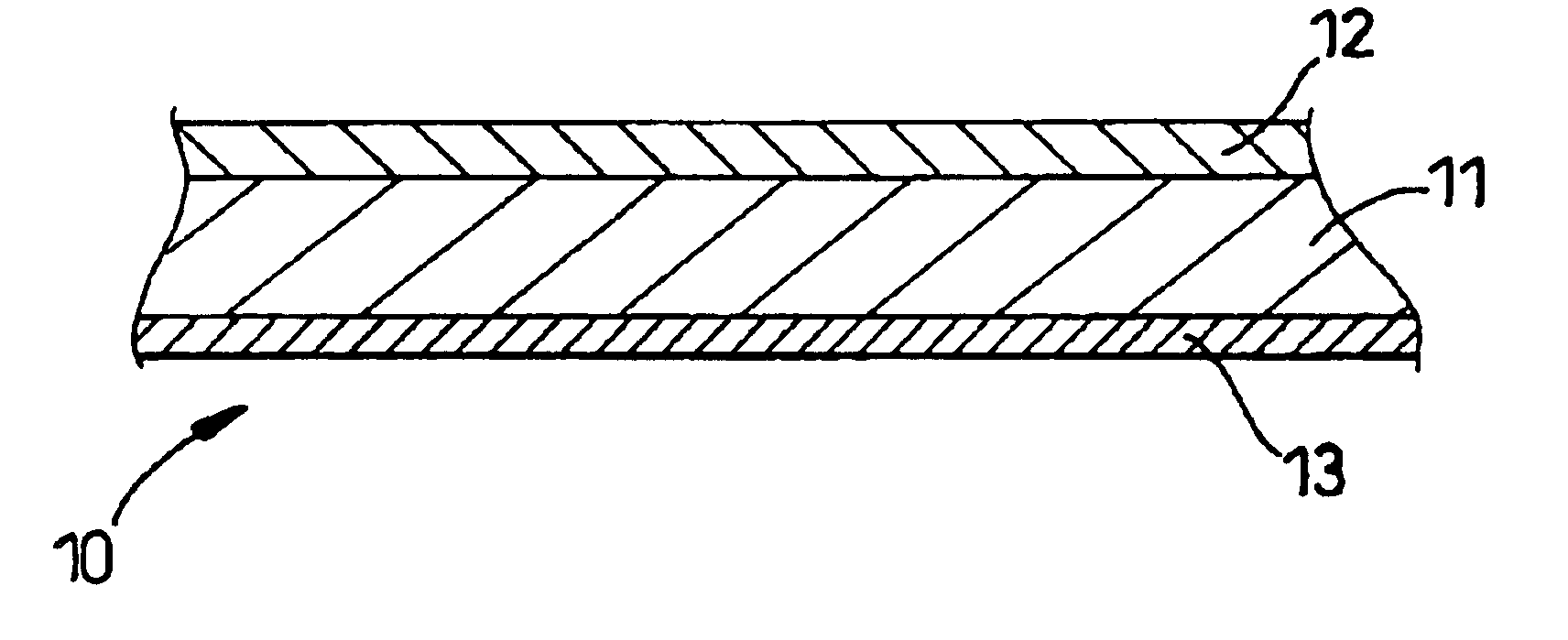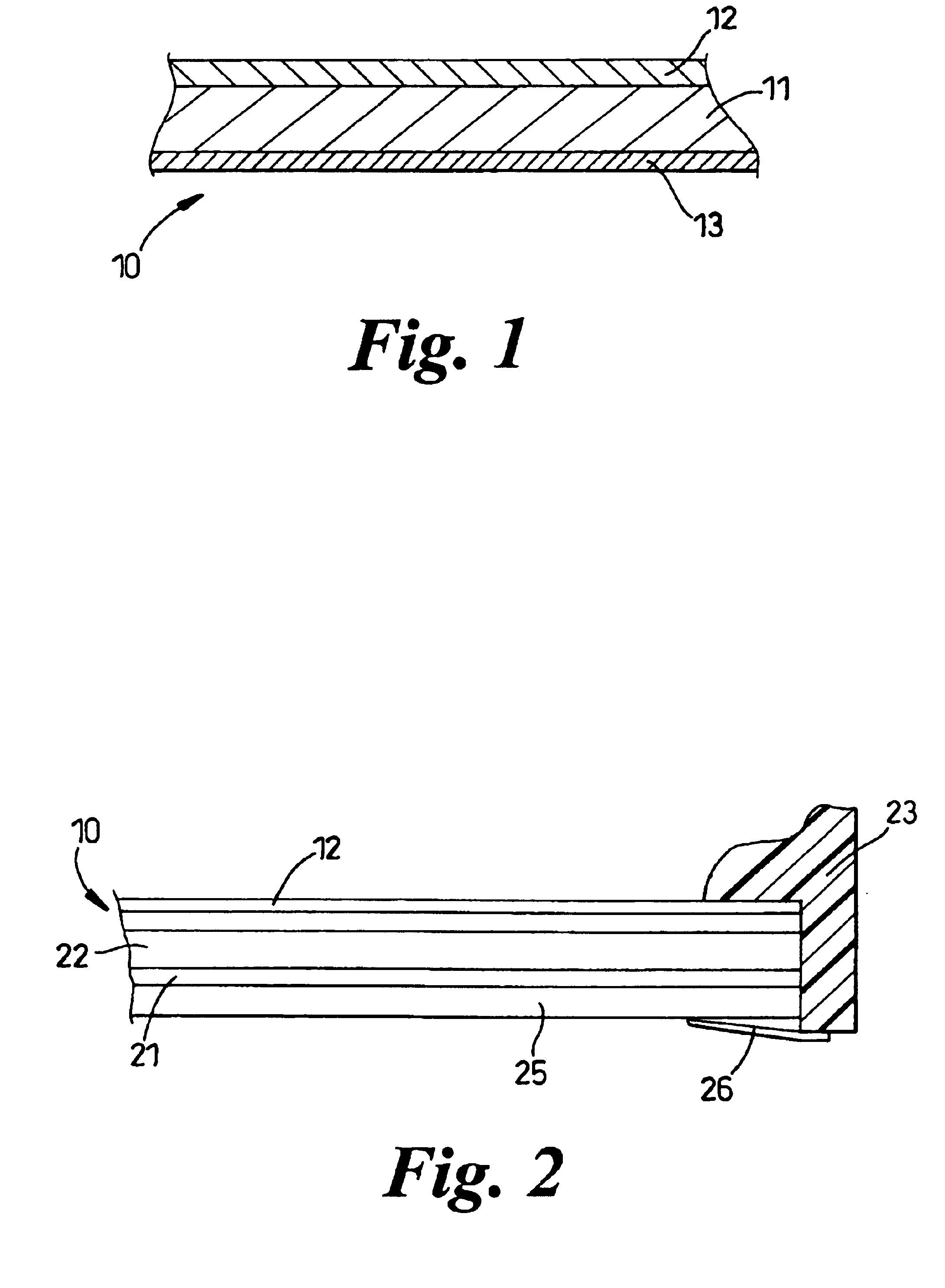Fade protector
a protective layer and protector technology, applied in the field of protective layers, can solve the problems of high cost of conservation glass, and achieve the effects of reducing measured gloss, reducing specular reflection, and reducing diffuse reflection
- Summary
- Abstract
- Description
- Claims
- Application Information
AI Technical Summary
Benefits of technology
Problems solved by technology
Method used
Image
Examples
Embodiment Construction
[0031]With reference to FIG. 1 there is shown a fade protector 10 comprising a suitable transparent polymeric film layer 11 including a UV absorber. A suitable transparent film is a polyester film, preferably a polyethyleneterephthalate (PET) film treated with a UV absorber as described in U.S. Pat. No. 6,221,112B so as to absorb up to 99% of UV radiation. A suitable PET film is DuPont Teijin Films'Melinex 454 or LJX 112. The PET films layer 11 is provided with an anti glare coating 12 on one side thereof and with a paper based mask 13 on the other side thereof.
[0032]The mask 13 is preferably release liner having a low tack adhesive on one side which in use adheres to the back surface of the PET layer to protect the film from scratching or marking prior to use. A suitable release liner is a polyethylene coated paper with a low tack adhesive thereon and a suitable product is available from Felix Schoeller Inc. of Pulaski, N.Y. under the designation 861b HDPE release liner.
[0033]The a...
PUM
| Property | Measurement | Unit |
|---|---|---|
| Angle | aaaaa | aaaaa |
| Haze | aaaaa | aaaaa |
| Haze | aaaaa | aaaaa |
Abstract
Description
Claims
Application Information
 Login to View More
Login to View More - R&D
- Intellectual Property
- Life Sciences
- Materials
- Tech Scout
- Unparalleled Data Quality
- Higher Quality Content
- 60% Fewer Hallucinations
Browse by: Latest US Patents, China's latest patents, Technical Efficacy Thesaurus, Application Domain, Technology Topic, Popular Technical Reports.
© 2025 PatSnap. All rights reserved.Legal|Privacy policy|Modern Slavery Act Transparency Statement|Sitemap|About US| Contact US: help@patsnap.com


